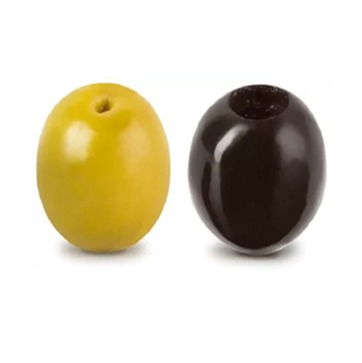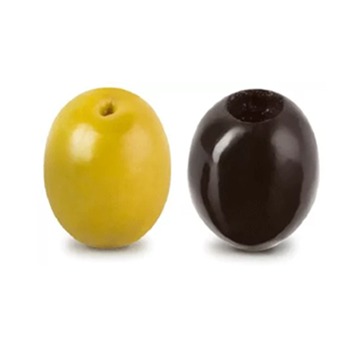OLIVES
OUR OLIVES
We work with the main varieties of Andalusian olives: Hojiblanca, Gordal and Manzanilla.
However, Hojiblanca is the Cordovan variety that we use the most and is most in demand internationally.
VARIETIES OF OLIVES
02
Gordal
Gordal olives are so called because of the size of the fruit. This olive is consumed green in seasoning; its flesh is soft and its oil content is low.

03
Manzanilla
The apple shape of the fruit is the origin of the name of the Manzanilla variety. Its flesh is delicate and its oil content is medium/high.
01
Hojiblanca
The Hojiblanca olive variety, olea europaea arolensis, owes its name to the underside of its leaves, which gives the tree a light, silvery appearance when seen from a distance.
The Hojiblanca is a full-bodied, smooth, elliptical, medium-sized olive, without a nipple, whose appearance makes it very attractive as a table olive. It is also an olive that can be eaten both green and, after an oxidation process, black. Its flesh, firm and consistent, is ideal for preparation as black olives.
It should be noted that the Hojiblanca olive is the second most cultivated variety in terms of cultivated area in Spain, occupying more than 265,000 hectares in the provinces of Cordoba, north of Malaga, east of Seville and west of Granada.
VARIETIES OF OLIVES



01
Hojiblanca
The Hojiblanca olive variety, olea europaea arolensis, owes its name to the underside of its leaves, which gives the tree a light, silvery appearance when seen from a distance.
The Hojiblanca is a full-bodied, smooth, elliptical, medium-sized olive, without a nipple, whose appearance makes it very attractive as a table olive. It is also an olive that can be eaten both green and, after an oxidation process, black. Its flesh, firm and consistent, is ideal for preparation as black olives.
It should be noted that the Hojiblanca olive is the second most cultivated variety in terms of cultivated area in Spain, occupying more than 265,000 hectares in the provinces of Cordoba, north of Malaga, east of Seville and west of Granada.
02
Gordal
Gordal olives are so called because of the size of the fruit. This olive is consumed green in seasoning; its flesh is soft and its oil content is low.
03
Manzanilla
The apple shape of the fruit is the origin of the name of the Manzanilla variety. Its flesh is delicate and its oil content is medium/high.
CALIBRE
It’s worth its weight in olives
Olives can be classified according to size, also known as calibre.
The calibre corresponds to the number of fruits that fit in one kilogramme.











PRODUCTION PROCESS
From the olive tree
to the palate
Before we can eat table olives, they have to go through various production processes which eliminate the natural bitterness of the raw olives. The duration of the process, which goes from the harvesting of the fruit in the field to the beginning of the preservation phase, is approximately 6 months. The production process is detailed below.






